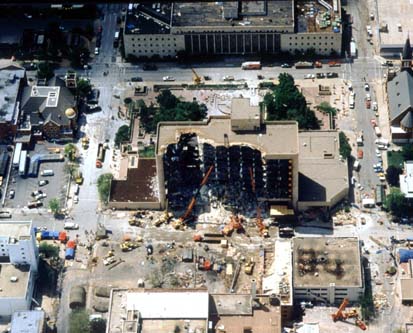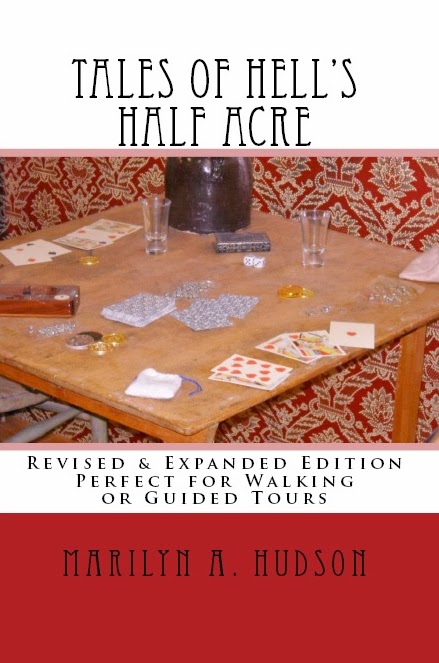 |
Photo from U.S. Army Corp of Engineers
(Public Domain) |
On a sunny April morning in 1995, the worst terrorist act on US Soil occurred with the bombing of the Murrah Federal Building in Oklahoma City, Oklahoma. It would hold that uneasy crown until another sunny morning in September of 2001 in New York, Washington D.C. and a lonely field in Pennsylvania. Since federal agencies were victims in OKC, the government agencies swept in and removed all the security tapes of this historic and deadly event. These were crucial as evidence and as history. These types of artifacts are safeguarded, preserved, and archived for legal studies and historic research.
Apparently not. According to a
story about a legal request for the tapes, it was made known that the tapes and other documents were deemed unimportant to even index and represented a burden for government employees to search.
This is unfortunate as it would lay to rest - finally and completely - if the videos were found, and could show clearly that McVeigh was alone. At least three individuals testified in September of 1995 that they saw McVeigh with not just one person (the famed 'John Doe', but another man as well) ("Witnesses Say McVeigh Not Alone." Daily Oklahoman, Sept, 2, 1995, pg. 42).
All of this - inevitably, clear as day, obviously - unites to make so strange the decision of the ATF to not test whether the truck bomb had the power to produce the devastation of the bombing as one of the most illogical decisions ever. ("ATF Calls Off Plan to Test Truck Bomb" Daily Oklahoman, Sept, 11, 1995, pg. 11). Let's see, we can show that this bomb could do that much damage, but we won't need that evidence.
Just like the strange decision to decide that the historic and valuable tapes and files of the investigation of the worst man-made disaster on US soil were not important enough to be cataloged or located. After all, no body will ever want to access that stuff now will they?
The MSNBC program
'THE MCVEIGH TAPES' is another clear way to not instigate a historical mystery.
This documentary purports to provide McVeighs own words and does allow some of his own words to be heard. Instead it largely brings cherry picked snippets with talking heads filling in and explaining how McVeigh's growing anger was focused and his wrath was directed.
Yet, you never hear McVeigh actually saying saying any of those things the talking heads insist he said or meant or felt. He is never shown ranting, never growing angry, or acting crazed (insert image image of an interview with Charles Manson for contrast).
So to create a lasting historical mystery do three simple things:
-Lose, destroy or minimize evidence
-Refuse to search for and preserve all evidence for future research and study
-Put words and inflections in the mouth of a historic figure.
Although, officially closed in 2006, with such slip-shod record keeping and unanswered questions, it will remain a riddle in search of an solution.
 When a friend reached him and asked who did it, he said, "there were three or four of them," then became unconscious. He died about twenty minutes after reaching home. Two men were arrested near the yards and are in jail but are not believed to be implicated. The car from which the shooting was done came from the West last night. Clothes hangers thrown away near the car and wire for making them which was found today on top of the car lead the officers to believe some peddler did the shooting.
When a friend reached him and asked who did it, he said, "there were three or four of them," then became unconscious. He died about twenty minutes after reaching home. Two men were arrested near the yards and are in jail but are not believed to be implicated. The car from which the shooting was done came from the West last night. Clothes hangers thrown away near the car and wire for making them which was found today on top of the car lead the officers to believe some peddler did the shooting. 





